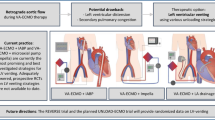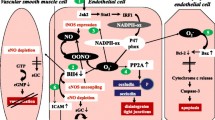Abstract
Bacterial endotoxin (LPS) releases many mediators such as interleukins, tumour necrosis factor, oxygen free radicals, toxic eicosanoids, platelet activating factor, and nitric oxide (NO). LPS is a potent inducer of inducible nitric oxide synthase (iNOS). Large amounts of NO (made by iNOS) and peroxynitrite, among other factors, are responsible for the late phase of hypotension, vasoplegia, cellular suffocation, apoptosis, lactic acidosis and multiorgan failure in endotoxic shock. Indeed, experimental and clinical use of NOS inhibitors, which do not differentiate clearly between constitutive endothelial NOS (ceNOS) and iNOS, prevents LPS-induced hypotension. However, many detrimental effects of such NOS inhibitors are also reported, including increases in pulmonary resistance, decreases in cardiac output and organ perfusion, and even an increase in mortality of experimental animals. We believe that, in lungs, NO made by ceNOS plays a protective role against the pneumotoxic effects of LPS-released lipids such as thromboxane, leukotrienes and PAF. This is why selective iNOS inhibitors like aminoguanidine or thiourea derivatives might be preferred over nonselective NOS inhibitors for the treatment of septic shock. However, since iNOS-derived NO seems to have more than just a destructive action, the selective iNOS inhibition may be not as beneficial as expected. Accordingly, inhalation of NO gas or NO-donors in septic shock might be a complementary treatment to the use of NOS inhibitors.
Similar content being viewed by others
Author information
Authors and Affiliations
Additional information
Received 22 May 1997; returned for revision 26 June 1997; accepted by M. J. Parnham 18 December 1997
Rights and permissions
About this article
Cite this article
Wolkow, P. Involvement and dual effects of nitric oxide in septic shock. Inflamm. res. 47, 152–166 (1998). https://doi.org/10.1007/s000110050309
Published:
Issue Date:
DOI: https://doi.org/10.1007/s000110050309




